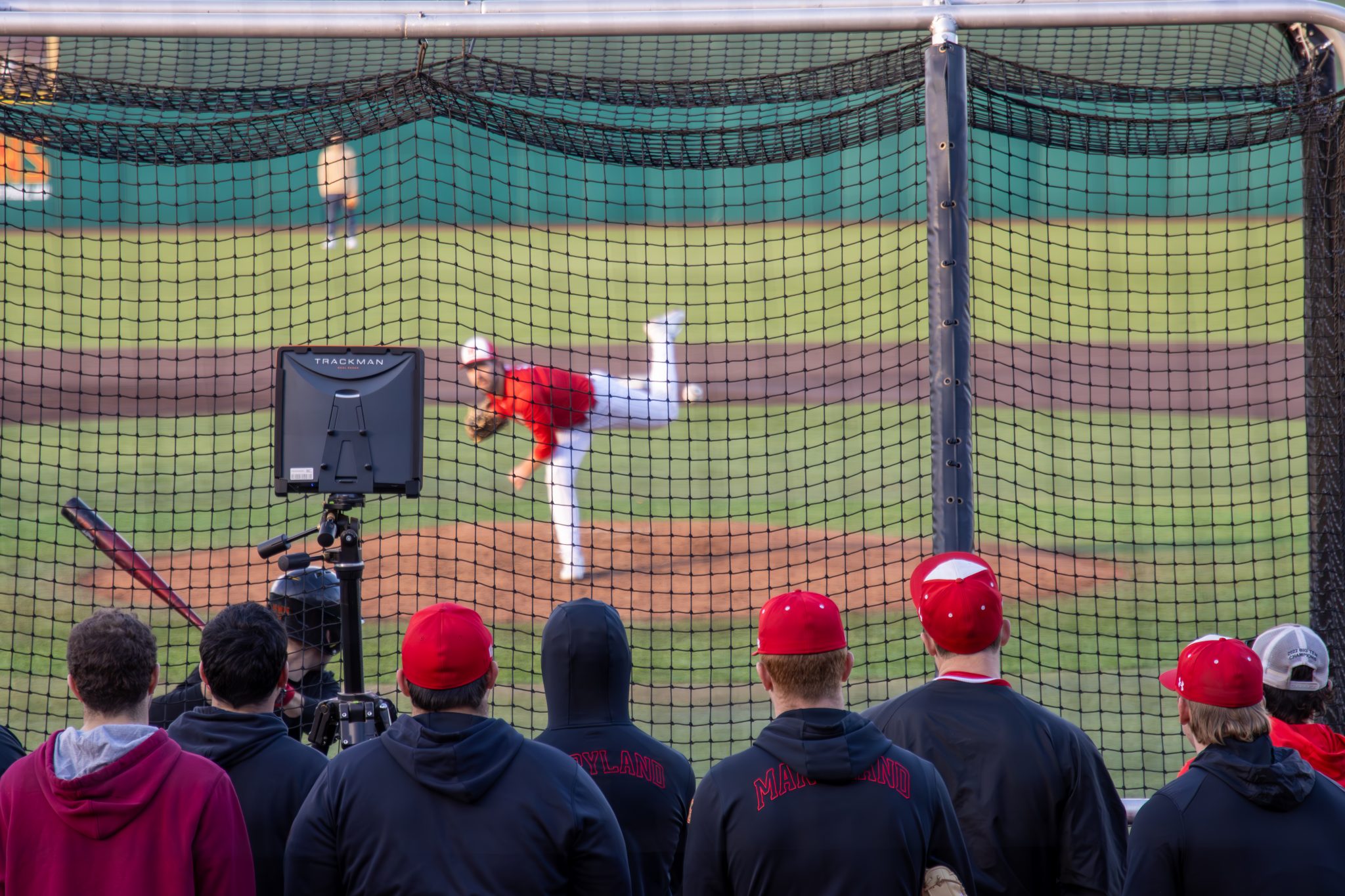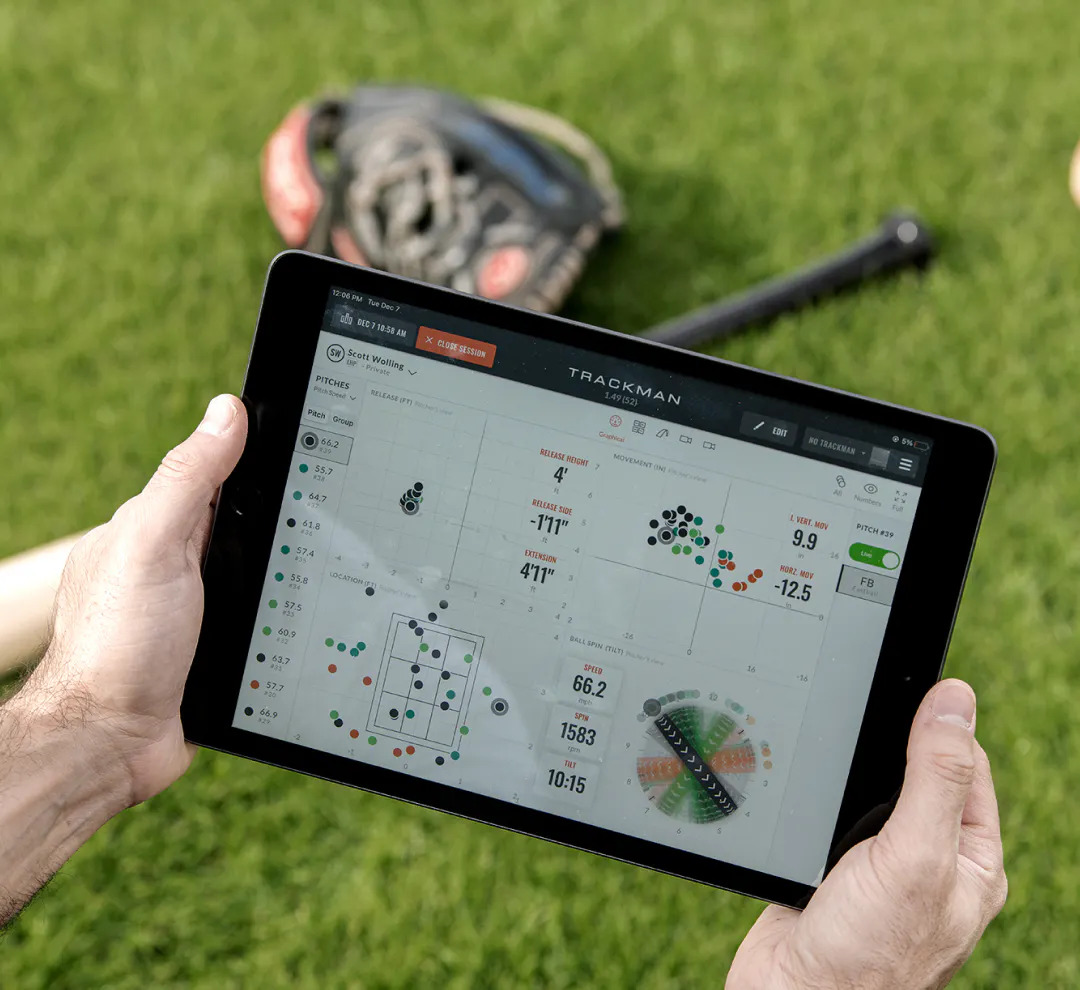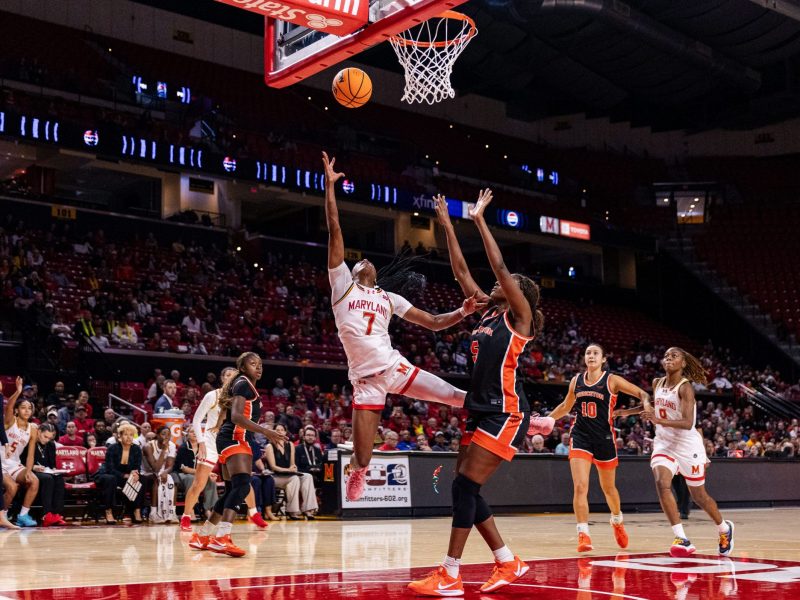Maryland pitching coach Jimmy Jackson understands how data-driven baseball has become. He aims to ensure Maryland baseball doesn’t fall behind. TrackMan is a piece of technology that helps achieve that.
TrackMan is a Doppler radar system that provides Maryland’s coaching staff with insight into the motion of pitches. The device details metrics such as horizontal and vertical movement, spin rate and pitch speed. It gives coaches and players a better understanding of what a pitch may look like to a batter.
“[TrackMan] tells you exactly what the ball is doing,” Jackson said.
Maryland bought a portable TrackMan in the fall. The unit is only used for bullpen sessions and intrasquad scrimmages, as it stands on a tripod and can’t be placed behind home plate during live game action.
Jackson said he looks at data as often as possible after throwing sessions. The system is utilized to learn why a pitch may have a low success rate. He analyzes the data to see where the movement is.
The pitching coach uses fastballs as an example. Jackson doesn’t want his pitchers’ fastballs to go completely straight, no matter how quick they move. Instead, he wants to see if the pitches have motion in order to confuse batters. TrackMan provides that information.
[Maryland baseball blows late two-run lead, loses to Washington, 6-5]
Jackson can determine whether a fastball has a “carrying” or “sinking” movement with the data. The ball carries when the spin rate is high enough with an upward force that it appears to rise toward the plate. It can appear sinking when thrown with a low spin rate.
“If the ball is straight as an arrow, it’s probably gonna get hit at this level. So we are trying to add movement,” Jackson said.
The system displays a plot where every pitch lands with different colors. A slider from a right-handed pitcher should have a horizontal motion to the left of a fastball. A curveball lands further down and moves vertically. A splitter has an even more drastic vertical drop.
“Preferably, you’ll see all those pitches being in a tight cluster if he’s consistently spinning the ball the right way,” Jackson said.
The data from TrackMan then assists Jackson’s work to fix each pitcher’s throwing motions. The device’s pitch analysis should align with any changes to a player’s arm slot or grip.
“The data isn’t an end all be all,” head coach Matt Swope said. “When we know the profiles, meaning the motor preferences of how they want to play baseball, then the data is really helpful because we should kind of know what the data should say.”
Jackson worked with right-hander Kenny Lippman in the fall to raise his arm slot. After watching video, the pair found that the starter’s arm slot dropped after primarily throwing fastballs and sliders last season.
[Late comeback fuels Maryland baseball to 7-5 win over Texas A&M-Corpus Christi]
After raising the slot to where it was while Lippman was pitching at Division III Denison, Jackson viewed the results of his pitches on TrackMan. The tool revealed that his fastball gained more carry and his slider added more horizontal movement. Lippman’s curveball achieved more spin, as well, and he added a splitter to his repertoire.
“Your eyes just aren’t able to tell you everything that the TrackMan does,” Lippman said. “You can throw a pitch to the right spot and it won’t have the right spin but your brain will tell you it’s a good pitch. The TrackMan will give you that instant feedback on the spin on if it’s good or not.”
A portable unit will be located inside Maryland’s new Stanley Bobb Baseball Player Development Center once its construction is completed. The Terps will also have high-speed cameras placed inside to probe pitchers’ throwing motions multiple frames per second.
Jackson said another TrackMan unit is supposed to be installed at the stadium this spring. This addition would allow Jackson access to pitching data for home games.
“It’s an enormous advantage to have it,” Jackson said. “If there’s 300 Division I schools, there’s probably 200 of them with a TrackMan. The problem is 80 percent of them don’t use the data to their advantage … I put those things in front of [the players] and give it to them.”




